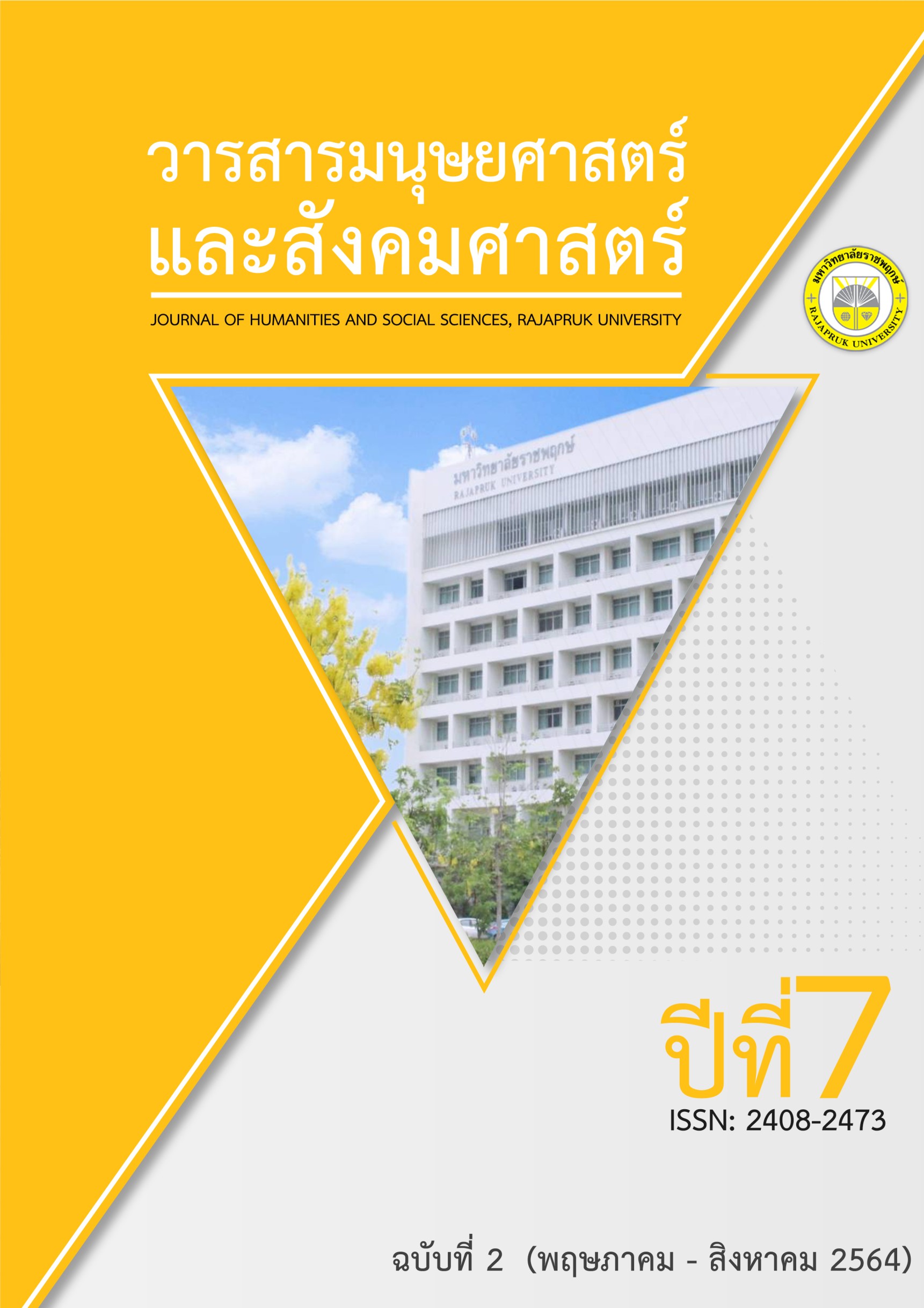The Priority Needs in Management Development of Primary Schools Based on The Concept of Developing Students’ Creativity
Main Article Content
Abstract
The purpose of this descriptive research was to study priority needs in management development of primary schools based on the concept of developing students’ creativity. The samples of this research were educational personnel selected from primary schools under the office of the basic education commission. The schools joined research and innovation of study planning for development of a critical thinking skills project in twenty–first century (creative based learning). In total, there were 246 persons from 82 schools. The research participants were divided into 2 groups. The first group was school director or deputy director of school, (1 person from every school). The second group was teachers. (2 people from every school). The research using a purposive sampling method and there was the 5-level rating scaled questionnaire. The data was analyzed by frequency distribution, percentage, mean, standard deviation, PNI modified and Item objective congruence. The findings indicated that in overall the priority needs in management development of primary schools based on concept of developing students’ creativity were as follows: The highest priority needs index was community involvement. The second priority needs index was policy. The third priority needs index was learning environment. The fourth needs index was administration. The fifth needs index was curriculum and instruction. The lowest needs index was teacher development, standard and assessment. The highest priority needs index of the development of creative thinking was presentation. The second priority needs index was imagination practicing. The third priority needs index was development of analytical thinking and problem solving. The fourth needs index was stimulating inspiration, group learning, and evaluation. The lowest priority needs index was self-learning and learning activity.
Article Details
References
ณภิญรัตน์ ทัพขวา. (2557). การมีส่วนร่วมของโรงเรียน ผู้ปกครอง และชุมชน เพื่อยกระดับคุณภาพผู้เรียนของสถานศึกษา สังกัดสำนักงานเขตพื้นที่การศึกษาขอนแก่น เขต 1. วิทยานิพนธ์ปริญญาศึกษาศาสตรมหาบัณฑิต สาขาวิชาการบริหารการศึกษา คณะศึกษาศาสตร์ มหาวิทยาลัยขอนแก่น.
บรรจง อมรชีวิน. (2554). สอนให้คิด. กรุงเทพฯ: ภาพพิมพ์.
ประพันธ์ศิริ สุเสารัจ. (2551). การพัฒนาการคิด. กรุงเทพฯ: 9119 เทคนิค พริ้นติ้ง. แผนพัฒนาเศรษฐกิจ และสังคมแห่งชาติ ฉบับที่ 12. (พ.ศ.2560-2579). ค้นเมื่อวันที่ 12 ธันวาคม 2559,จาก http://www.nesdb.go.th/article_attach/article_file_20160922162840.pdf.
ปารณทัตต์ แสนวิเศษ. (2555). การมีส่วนร่วมของชุมชนในการจัดการศึกษาขั้นพื้นฐานของโรงเรียนประถมศึกษา: การสร้างทฤษฎีจากฐานราก. วิทยานิพนธ์ปรัชญาดุษฎีบัณฑิต. สาขาบริหารและพัฒนาการศึกษา คณะคุรุศาสตร์ มหาวิทยาลัยราชภัฏสกลนคร.
พิพัฒน์ จรัสเพ็ชร. (2561). การจัดสภาพแวดล้อมทางกายภาพภายในห้องเรียนเขียนแบบที่ส่งผลต่อความคิดสร้างสรรค์ของนักศึกษาสาขาออกแบบตกแต่งภายใน สถาบันบัณฑิตพัฒนศิลป์. วิทยานิพนธ์สถาปัตยกรรมศาสตรมหาบัณฑิต สาขาสถาปัตยกรรมภายใน คณะสถาปัตยกรรมศาสตร์ มหาวิทยาลัยกรุงเทพ.
วิริยะ ฤาชัยพาณิชย์. (2558). การสอนแบบสร้างสรรค์เป็นฐาน Creativity-based Learning (CBL). วารสารนวัตกรรมการเรียนรู้, 1(2) กรกฎาคม-ธันวาคม 2558.
ศิริชัย กาญจนวาสี. (2552). สถิติประยุกต์สำหรับการวิจัย. กรุงเทพฯ: สำนักพิมพ์แห่งจุฬาลงกรณ์มหาวิทยาลัย.
สุกัญญา แช่มช้อย. (2555). การบริหารโดยสถานศึกษาและชุมชนเป็นฐาน: ความท้าทายของการปฏิรูปการศึกษาในทศวรรษที่สอง. วารสารศึกษาศาสตร์มหาวิทยาลัยนเรศวร, 14(1): 101-111.
สุกรี วัชรพรรณ และสุนันท์ ปัทมาคม. (2529). ปฏิสัมพันธ์ระหว่างรูปแบบการนำเสนอ ความคิดริเริ่มสร้างสรรค์และระดับผลสัมฤทธิ์ทางการเรียน ที่มีต่อสัมฤทธิผลทางการเรียนวิชากลุ่มการงานและพื้นฐานอาชีพ ของนักเรียนชั้นประถมศึกษาปีที่ 5. วิทยานิพนธ์ครุศาสตรมหาบัณฑิต คณะครุศาสตร์ จุฬาลงกรณ์มหาวิทยาลัย.
สุวิมล ว่องวาณิช (2548). การวิจัยประเมินความต้องการจำเป็น. กรุงเทพฯ: สำนักพิมพ์แห่งจุฬาลงกรณ์มหาวิทยาลัย.
อภิชัย พันธเสน. (2558). งานวิจัยเรื่องการสังเคราะห์งานวิจัยว่าด้วยปัญหาและข้อเสนอแนะในกระบวนการจัดการศึกษาไทย: ประเด็นปัญหาคุณภาพการศึกษา. สำนักงานกองทุนสนับสนุนการวิจัย (สกว.).
Awang, H., and Ramly, I. (2008). Creative Thinking Skill Approach through Problem-Based Learning: Pedagogy and Practice in Engineering Classroom. World Academy of Science, Engineering and Technology International Journal of Educational and Padagogical Sciences, 2(4): 334-338.
Eragamreddy, N. (2013). Teaching Creative Thinking Skills. International Journal of English Language & Translation Studies, 1(2): 124-143.
Lin, Y.S. (2011). Fostering Creativity through Education–A Conceptual Framework of Creative Pedagogy. National Academy for Educational Research, 2(3): 149-153.
Robert Sternberg and Wendy. (2003). How to Develop Students Creativity. Association for Supervision & Curriculum Development.
Robinson K., and Aronica, L. (2015). Creative school. U.S.A: Viking Penguin lll.
Schirrmacher, R. (1998). Art and Creative Development for Young Children. New York: Delmar Publishers.
Sharp, C. (2004). Developing young children’s creativity through the arts: what does research have to offer?’. Paper presented to an Invitational Seminar, Chadwick Street Recreation Centre, London, 14 February Retrieved on 13th January 2004, from http://www.nfer.ac.uk/research/papers/ creativity.pdf


